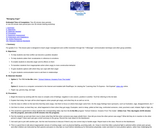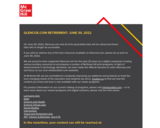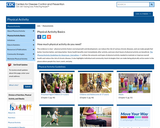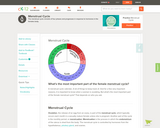
These activities will help students understand the anatomy and function of the male
reproductive system.
- Subject:
- Health
- Healthful Living
- Material Type:
- Activity/Lab
- Provider:
- KidsHealth
- Date Added:
- 02/20/2018

These activities will help students understand the anatomy and function of the male
reproductive system.

This lesson plan is designed to teach anger management and conflict resolution through the "I-Message" communication technique and other group activities.

Students will identify causes of stress for middle-school students, recognize that people have different ways of perceiving the same situation and identify one or more healthy ways to reduce stress.

In this lesson, students read a story about body diversity and discuss the different shapes and sizes that people come in. They make body tracings that celebrate their unique shape and size, and talk about ways to keep their bodies healthy through good nutrition and activity.

Students look at the less obvious methods used by advertisers to reach consumers: humorous, self-depreciating ads, product placement, product association with celebrities, ads promoting empowerment and affirmation and 'advocacy' advertising.

This is a supplemental article that gives food label comparisons. This supplement is to be used with the Nutrition Facts Panel lesson.

Students learn how important meal plans are when you have diabetes, types of meal plans, and how food labels can help.

Bullying, particularly among school-age children, is a major public health problem. This compendium provides researchers, prevention specialists, and health educators with tools to measure a range of bullying experiences: bully perpetration, bully victimization, bully-victim experiences, and bystander experiences. Some researchers continue to examine the risk and protective factors associated with bullying experiences. Others are working to design, implement, and evaluate bully prevention interventions aimed at reducing bully victimization and perpetration, as well as increasing prosocial bystander involvement in bullying situations. The ability to measure bullying experiences broadly and completely is crucial to the success of these activities. This compendium represents a starting point from which researchers can consider a set of psychometrically-sound measures for assessing self-reported incidence and prevalence of a variety of bullying experiences.

This resource provides some ways to understand and measure the intensity of aerobic activity: relative intensity and absolute intensity.

Discussion questions and activities to help students learn to evaluate health-related information so they can
make healthy choices in their lives.

This article provides information concerning children and medication safety.

This resource provides information to help students understand medication safety.

This activity helps students understand the uses of different medications, as well as, the dangers associated with the use of alcohol, tobacco, and drugs.

This activity provides information to help students understand medications, alcohol, tobacco, and drugs.

Students learn how important medication can be for individuals with diabetes through this article.

This webpage provides information for evaluating the quality of health information on Web sites. Criteria are provided.

Students learn about the importance of the nose, ears, eyes, tongue, teeth, nails, skin, and hair.

This resource describes the menstrual cycle. A list of review questions is provided.

In this lesson students will identify the five food groups and choose foods that are healthy to eat for dinner.

Students look at the different groups in our society that deliver messages to the public about drinking and consider the influence of each of these groups on the attitudes and perceptions of young people.